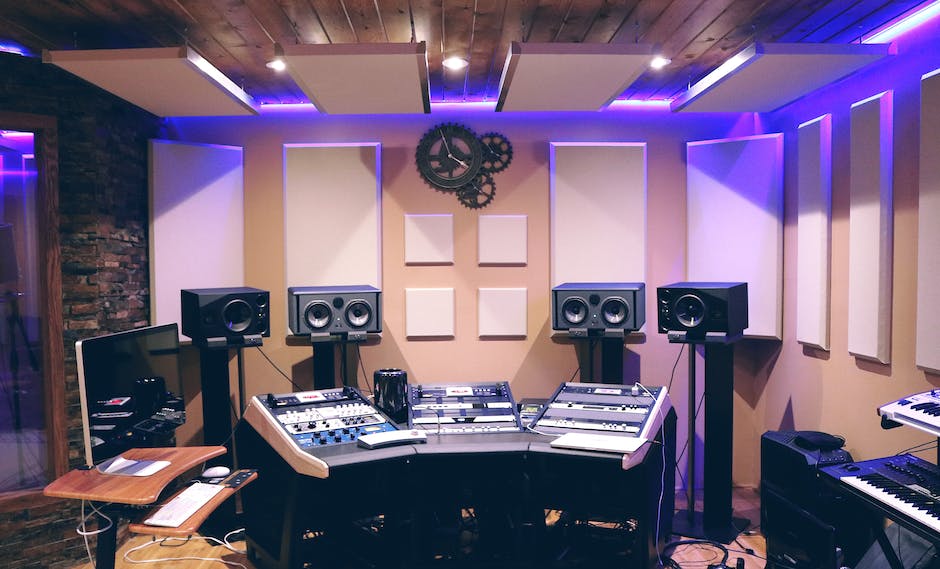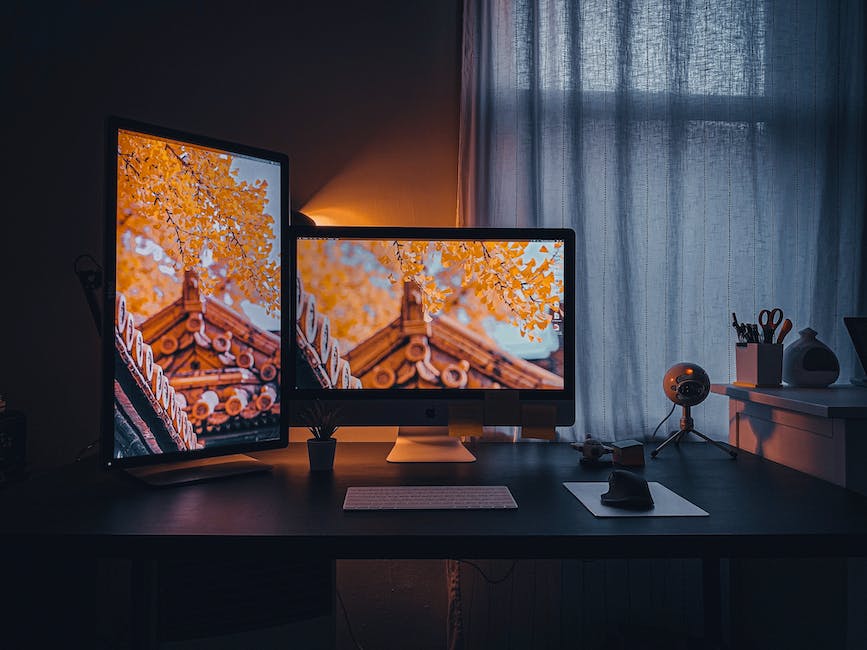In the world of audio recording, the notion of sound extends beyond the music, the melody, and the rhythm. It inches its way into the territory of its environment. The silent actors – room size, structure, materials – unreel a directive hand in determining a recording’s quality and balance. The magic interplay between sound waves and the room’s attributes arguably become just as significant in crafting the quality of a recording as the instruments and vocals themselves, making room acoustics, an essential component in the auditory narrative.
Understanding Room Acoustics
Music, the universal beat that pulsates through time and space, uniting people, and resonating with the rhythms of our souls. An orchestra of frequencies in an intricate dance of sound waves. Yet, these melodies we so tenderly fashion can be significantly impacted by an oft-overlooked ally: our physical environment. The sonic world we cultivate in is not merely a passive backdrop but an active participant in our auditory symphony. Let’s dig deeper into how the physical space and its acoustics influence your recordings.
In the throbbing heart of music production is a delicate dance between sound and space. Think of a cupped hand transforming a whisper into a reverberating echo, or how a canyon magnifies the tiniest sound into a grand cacophony. The science behind it – sound waves interact with surrounding structures, modifying their character, setting forth a cascade of interactions between the source, the space, and the receiver.
Now, envisage your recording studio as a dynamic vessel, crafted and curated to elicit the optimal sonic ambience. From the epicenter of performance to the furthest walls, every surface -ceiling, floor, furniture- plays a role, for it’s here our music meets the world. Your room becomes an invisible instrument, shaping the sound output, transmuting raw pulsations into the ambience-laden tracks that truly touch the listener.
Take reverb, for instance. A beautifully complex phenomenon, an interplay of reflections creating a sonic aura that can quite literally transport the listener from a grand cathedral bathed in ethereal strains of a violin to intimate jazz clubs. Yet, mismanagement of reverb in a confined space can bring about an unfocused mess of sound. It’s about finding balance – a symphony not just of notes, but of space and sound.
Then there’s soundproofing – isolating the precious strains of your melody from the din of the outer world. It’s not just about eliminating unwanted noise; it’s about creating a pure, unfettered space for your music to flourish. From foam panels to bass traps, these accouterments serve not just an aesthetic purpose; they shape your sonic landscape.
And, let’s not forget the influence of materiality. Wooden floors adding warmth, tiled surfaces providing brightness, glass fostering sustain. Even the density and arrangement of furniture can sculpt the raw clay of your sound.
There’s an undeniable intimacy imbued within each performance, a reflection of time, experience, artistry. Yet intertwined with each plucked string, each uttered verse, lies the pervasive influence of the very room from which it was given life. It becomes clear then, that to truly master the art of music recording, one must engage with the very space they exist within, fostering a harmonious relationship between the musician, the music, and the studio space.
So, as we delve deeper into the sensory wonderland of sound, remember: your recording doesn’t exist in a vacuum, confined to a track, separated from the world. It’s intimately intertwined, flowing symbiotically with the physical world – a delicate and dynamic dance of sound and space that makes recorded music, not just heard, but sincerely felt.

The Significance of Acoustic Treatment
Creativity Born of Precision: The Importance of Acoustic Treatment in Recording Studios
Acoustic treatment is the unsung hero of music recording studios worldwide—an audible chameleon nuanced in its art of curating the desired sound. Its influential role shapes the recorded music we revel in, from the heart-rending concertos and rousing rock anthems to the soul-soothing folk melodies. It is the auditory architect, refining and remixing the raw music produced within the studio.
One cannot overstate the value of acoustic treatment when orchestrating a studio’s setup. Acoustic treatment specializes in managing sound within a space, forming a musical solitaire—each note, each chord, enhanced and flawless.
Consider the drum hit: raw, powerful, and commanding. Yet, without the mastery of acoustic treatment, it resonates with less precision, more distortion, analogous to a lion’s roar in a concrete jungle. An untreated room alters the sound spectrum, warping the fidelity of the initial pulse. Ponder the echoes and reverberations clashing, creating a dissonance diminishing the clarity we musicians strive for.
Much akin to a painter’s palette, acoustic treatment offers the music creator a wealth of options. Imagine the joy of the painter, given a palette brimming with new hues, tones and textures. Acoustic treatment gives musicians and producers this same sense of expansive potential.
It encompasses an array of resources including diffusers, bass traps, and absorption panels, each designed to serve a unique role within the auditory orchestra of the recording studio. Diffusers scatter reflections to enrich the sound, bass traps manage low-frequency resonances to maintain balance, and absorption panels control reverberation time to ensure clarity. Managed with the right mix of skill and intuition, these tools can turn a commonplace space into a conduit for capturing music’s magic.
Successfully treating a recording studio doesn’t entail a complete absorption of the sound. On the contrary, it’s about taming the room’s auditory wilds, crafting an optimal balance between absorption and reflection, a play between silence and sound. It’s like tending a sonic garden, fostering an environment wherein music can not only survive but thrive in its truest form.
There’s a sensitivity to be offered towards the relationship that acoustic treatment nurtures between the creator and creation. Each strum, each beat witnessed within the recording studio is an echo of a musician’s spirit. Interlacing these echoes in the most harmonious manner possible is our aim.
Acoustic treatment is not merely about compartmentalizing sound–it is about nurturing it, shaping it, evolving it. Just as a sculptor shapes the clay, a musician shapes sound. And in the hands of a master, who understands the intricacies of their workspace, the result is more than just sound—it is a resonant, evocative expression of art.
Ultimately, if we are to respect music in its highest manifestation, the acoustic treatment demands serious consideration. It is about honoring music’s intangible essence, the sacred space where human hearts communicate without words. Where musical notes, utterly bereft of tangible form, reach out and touch our lives with their rhythms, their melodies, and their profound ability to express the inexpressible. So, whether you’re a seasoned professional or a budding hobbyist, investing time and thought into the acoustic treatment of your studio is an ode to your commitment, bridging the gap between good music and exceptional music.

The Sound of Silence – Acoustic Isolation
Venturing from here into the heart of acoustic isolation, one is drawn into a dialogue of sound and silence, where excess noise is banished, and the truest voice of the music is welcomed. Acoustic isolation pays homage to the unique rhythms and sounds of music, accentuating every note, chorus, harmony, and tune, contributing significantly to the rich tapestry of recording quality.
Every resonance that graces a microphone in recording studios does so in an ecosystem where each decibel of sound is acutely managed. Acoustic isolation shapes this ecosystem in such a way that only the desired sounds cross the sensitive threshold of microphones, ensuring purity in the journey from the instrument to the recording device.
Possessing a deep understanding of sound behavior in a confined space is instrumental to the success of acoustic isolation. To accomplish this, rooms are treated with acoustic materials that tackle various concerns, acting akin to sound maestros conducting symphonies. This attention to detail creates a balance, allowing recordings to stay authentic, whilst eliminating factors that could compromise sound purity.
With untreated spaces, sound may easily scatter, causing an uncontrolled spectrum of audio chaos. It’s akin to forcing a beautiful piece of sheet music through a shredder – the inherent beauty and coherence are lost amidst the chaos. Acoustic isolation restores order, giving sound the pristine canvas it needs to truly shine.
Acoustic treatment resources such as wall-mounted diffusers, meticulously placed bass traps, and absorption panels shepherd sound waves toward their purpose while diffusing unwanted noise. Like skilled craftspeople, they shape the desirable sound whilst chiseling away the unnecessary, tweaking the audio environment until the sound dances to the desired tempo.
In pursuit of sound perfection, gatekeepers of acoustic isolation walk a tightrope between sound absorption and reflection. To tip the scale either way could disrupt the balance, muddying the delicate harmony between the music and its environment. This delicate balance creates an unrivaled sound fidelity, where every note, every beat, resonates with the intent of the creator.
The creators pour their souls into the music; the melodies, chords, and harmonies are extensions of their thoughts and feelings. And it is the role of effective acoustic treatment to ensure that their expressions ring true in every recording, without being tainted by extraneous sounds or reflections. Here, acoustic isolation ensures that the fingerprint of the artist remains unscathed, unblurred.
Sound is an art, music its most eloquent expression. With proper acoustic treatment, it’s like nurturing a seed into a full blooming tree, with branches that reach far and wide, touching every heart that can sense its message. It’s a mark of due respect and reverence for the sound that is harbored and treated, allowing it to mature into a piece of music, a symphony, or a ballad.
In the end, acoustic isolation is more than a means to an end. It’s the unsung hero in the creation of quality recordings, the silent partner in the duet between the music and the creator, shaping, polishing, and refining what already exists in pure form. Painting a world where sound exists in its purest form, acoustic isolation contributes to the masterpiece that is music. Thus, acoustic isolation co-authors the narrative of sound, just as passionately, devoutly, and authentically as every musician.

Acoustics in Practice – Real Life Case Studies
Diving deeper into the realm of recording quality, we find a meticulous process, as fascinating as alchemy, where artists and producers harness the power of room acoustics to achieve striking balance and profound sonority. The musical landscape is awash with unsung heroes who have mastered the art of room acoustics, thus paving the way for sound to march fearlessly into the ears of the listener—a near-tangible manifestation of the artist’s heart and soul.
Any room, untreated, can drastically distort the true essence of sound. Just as a painter wouldn’t use a speckled or uneven canvas, an artist or producer knows an untreated studio is a formidable foe to authentic sound production. Yet, with the right knowledge and resources, these acoustic anomalies become creative opportunities.
Acoustic treatment, a crucial component of studio design, emerges as a lifeline, rescuing sound quality from the clutches of distortion. Acoustic isolation particularly, walks into the spotlight here. Hailed as the guardian angel of sound purity, it banishes unwanted ambient noise, gifting back control to the artist, the true puppeteer of the sound stage.
In the spirit of crafting an unparalleled auditory experience, artists and producers boldly employ various materials and techniques. These can range from specialized acoustic panels effectively soaking up unwanted frequencies to diffusers scattering sound waves and bass traps targeting lower frequency sounds. Their usage, like an art itself, helps in achieving that sonic sweet spot where balance and resonance reign supreme.
This acoustic inoculation of the space, though technically a process of addition, results in a form of subtraction. By controlling the reflections and absorption of sound, any form of muddiness or excess echo is expertly weeded out. The result? A meadow of auditory excellence where the music blooms in full potency, reaching the listener’s senses intact, as the artist and producer initially intended.
Preserving this authenticity is no small feat. In fact, it’s just as vital as the creation of music itself, governing the very medium in which the artist’s vision travels. Each acoustic treatment whispers a silent oath: to faithfully carry the artist’s expression, unscathed, from the studio to the listener.
Artists and producers’ repertoire is far more encompassing than mere sounds and silences. Through room acoustics and acoustic treatments, they prudently preserve every nuance of the music, ensuring that the sonic experience isn’t just heard, but deeply felt. It’s akin to a planned and committed partnership between artist, producer, and room acoustics—a symphony in sync, just like the complex yet harmonious layers of melody, harmony, and rhythm in music itself.
Like a reclusive master artist working diligently in a hidden atelier, the acoustic engineer’s work is often unseen, but always profoundly experienced. Their knowledge of acoustics becomes the key that unlocks the puzzle of a perfect recording. As the audience, we lose ourselves in the entrancing melodies, resonating frequencies, and vibrating beats, yet only a few understand the labyrinthine process required to achieve this listening nirvana.
In essence, the delicate dance of sound within a space, the deep understanding of acoustics, and the reverence toward music’s integrity, together create a potent potion stirring up unforgettable sonic experiences. The symbiotic relationship between sound and space, genius and gear, remains indispensable in the creation of a quality recording. It’s a testament to the intricate beauty of music—a harmonious melody of invention, reflection, and rigor.

Creating Your Symphony – Step by Step Guide
Harnessing the Power of Monitor Placement and Seating Positioning
The intricate ballet of achieving perfect sound recognizes the pivotal role of monitor and seating positioning. These elements, though seemingly trivial, exude profound repercussions on the sound being produced and recorded – notably affecting the frequency response and stereo imaging.
Like aspiring to catch the moon’s reflection in a pond with perfect clarity and symmetry, critical listening and producing require a triangle-like arrangement – equal distance between the devices and listener, finely honed to your sonic aestheticism. This coveted ‘sweet spot’ ensures a harmonious marriage of direct sound and room reflections, revitalizing the creators’ soul through unhampered audio fidelity.
Delving Deep: Understanding and Setting Up Bass Traps
As we voyage deeper into the sonic abyss, it becomes compellingly apparent that low frequency sounds are an auditory marauder, notoriously harder to control. As such, they warrant an unshirkable focus in room setup. Optimum control of bass frequencies can be envisioned through the strategic placement of carefully designed bass traps.
Typically, these sonic wardens are positioned at the room’s corners, where low frequencies tend to boogie. They absorb the excess bass, serve to minimize undesirable reflections and, in turn, assist in mastering the lower end spectrum. The result? A balanced, full-bodied sound that hits all the right notes, a symphony of clarity that reverberates authenticity.
Precision Crafted Diffusers: An Art or a Necessity?
Diffusers, in their kaleidoscope of shapes and configurations, service an unalterable purpose: they scatter the sound energy evenly across the room, crucial for countering harmful reflections and hotspots. Deploy these invaluable allies along the rear wall to help spread reflections in different directions, bestowing a sense of spaciousness and depth to the room.
Not just a tool, but an art form, they breathe a depth of field into the recording, adding dynamism and color to an otherwise sterile sound. The sound, thus treated, resonates with the ethos of the artist, reverberating a richly nuanced symphony of emotions.
Integrating Acoustic Panels: Marrying Reflection Absorptions with Aesthetics
Finally, the intricate dance of room setup wouldn’t be complete without the addition of acoustic panels. Their mission? To absorb and minimize middle and high-frequency reflections. These versatile elements, when paired with absorptive materials, swirl together a perfect blend of aesthetics and functionality – a testament of respect to music through acoustic treatment.
Despite the complex science behind it, setting up a room for the best recording quality ultimately reverberates a primal appreciation for music’s uniting force and a deep respect for the authentic bond forged between artist and art. It’s the equivalent of drawing the musical blueprint, setting the proverbial stage where raw talent, passion, and acoustics unite in a symphony of auditory delight.
So, go forth. Carve that sanctum of sound. Because every beat, every melody, and every harmony captured faithfully and authentically allow music to reverberate its unifying magic across human hearts and souls.

Creating harmonious sound; an artist’s vision and purpose. Yet, mastering this harmony extends past the creation of music itself, journeying instead into the mystical world of the room’s acoustics, each room holding the potential to be the orchestra pit to your own symphony. Acoustic treatments and sound isolation techniques can metamorphose a simplistic room into perfection’s cradle. From the threshold of selecting the suitable space, to the minutia of understanding its acoustical properties and applying necessary treatments, sound engineering constructs a bridge between sound and silence, culminating into an enchanting dance of musical excellence.

Comments.
Currently there are no comments related to this article. You have a special honor to be the first commenter. Thanks!